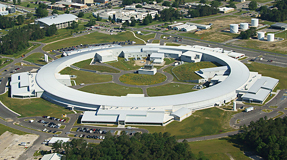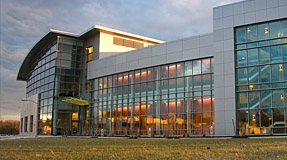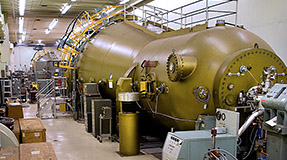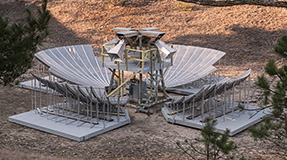Description of Brookhaven Lab Tours
Tour Date: Thursday, May 2, 2024
Important Notice
- Guests must show an official photo ID to enter BNL (e.g., driver's license, passport)
- Some tours may visit active research facilities
- Guests must wear long pants and flat, closed-toe shoes Access may be restricted if proper attire is not worn
- Tours to NSLS-II
- NSLS-II is posted a Controlled Area
- Guests will be required to read and sign the following documents: briefing outline and training waiver for person under escort
- Guests must follow the instructions of their trained BNL escorts and remain with them at all times
- All visitors must be 16 years old to be permitted on the NSLS-II experimental floor
- The conference organizers will provide further guidance as needed
- Unless noted, tours will not cost any funding
About Brookhaven National Laboratory
Facility Description

National Synchrotron Light Source II (NSLS-II)
NSLS-II is a state-of-the-art, 3 GeV electron storage ring designed to deliver world-leading intensity and brightness, and will produce x-rays more than 10,000 times brighter than the original NSLS. The facility offers scientific and industrial researchers an array of beamlines with x-ray, ultraviolet, and infrared light to enable discoveries in clean and affordable energy, high-temperature superconductivity, molecular electronics, and more. Overview | Image Library

Center for Functional Nanomaterials (CFN)
The CFN explores the unique properties of materials and processes at the nanoscale. The CFN is a user-oriented research center whose mission is to be an open facility for the nanoscience research community and advance the science of nanomaterials that address the nation's energy challenges. About CFN | Image Library

Tandem Van de Graaff
The Tandem Van de Graaff Facility consists of two 15-megavolt electrostatic accelerators capable of delivering continuous, or high-intensity pulsed ion beams in a wide range of ion species at various energies to experimental chambers that are available to researchers on a full cost-recovery basis.

BMX Radio Telescope
Cosmologists have primarily used optical telescopes—telescopes that observe space through visible light—to study galaxies and their distributions in space and time. These telescopes are extremely advanced, and ones like the Large Synoptic Survey Telescope (LSST) now under construction in Chile are fully optimized for cosmological applications; however, optical telescopes are also extremely expensive to build. That's why Brookhaven is investigating radio telescopes as an alternative, cost-effective way to observe the universe.



